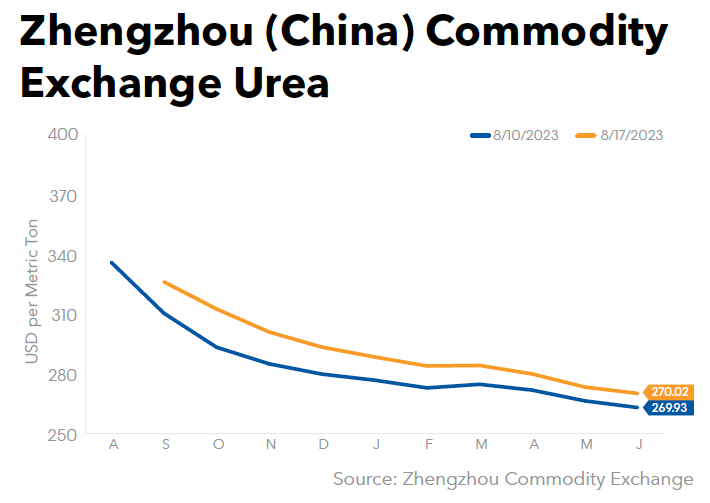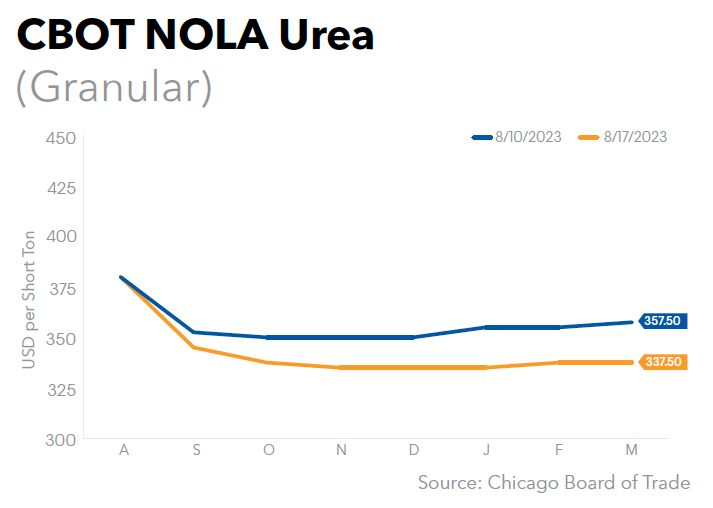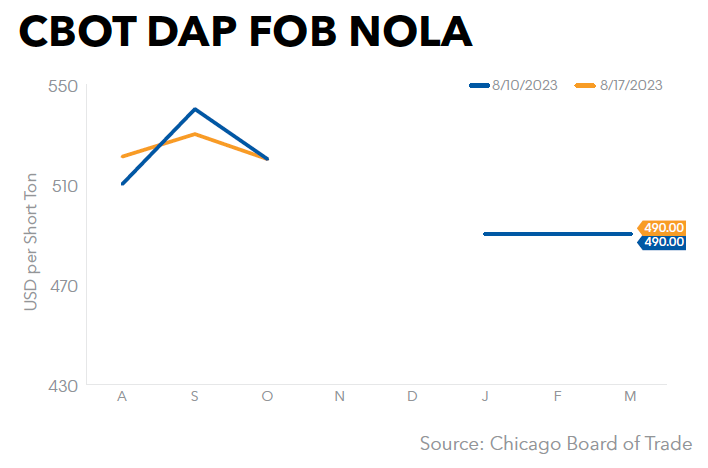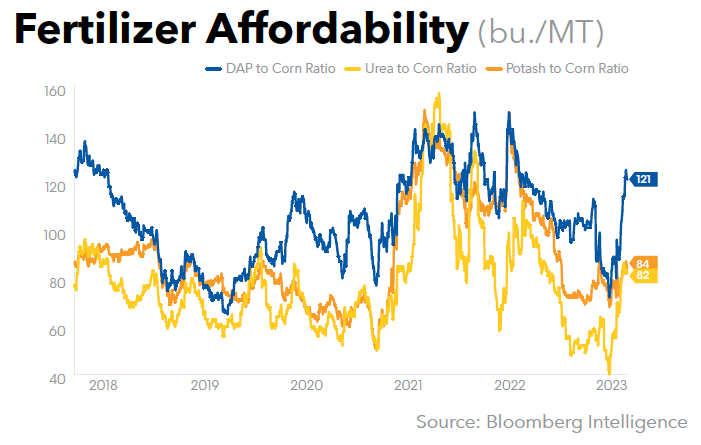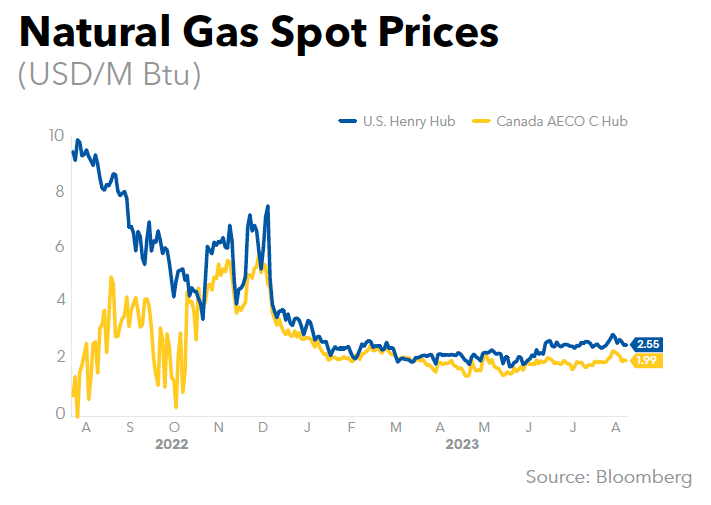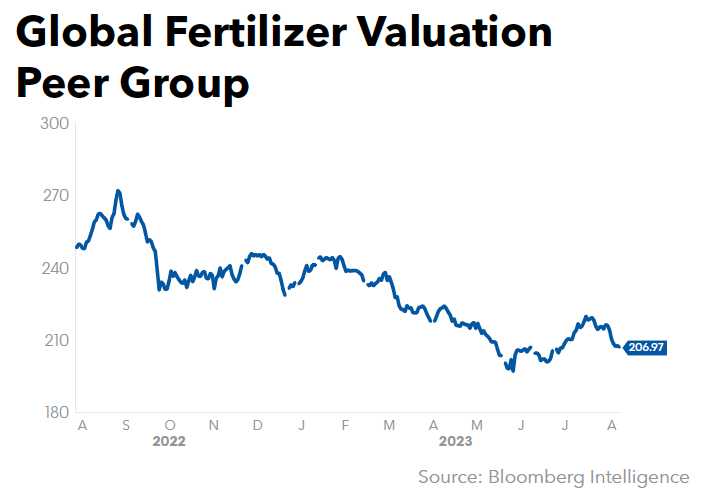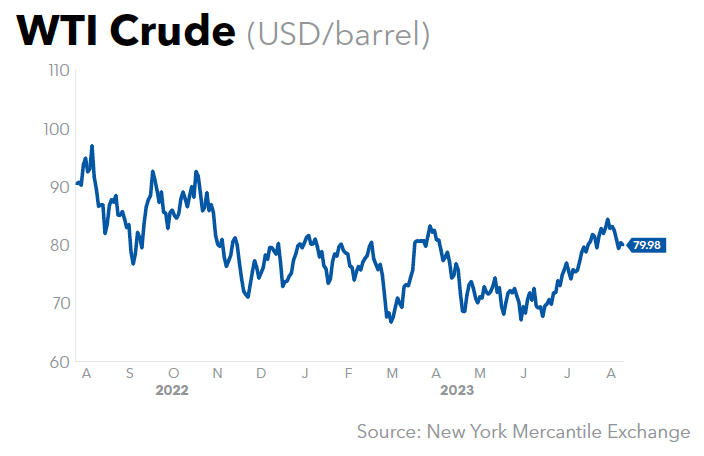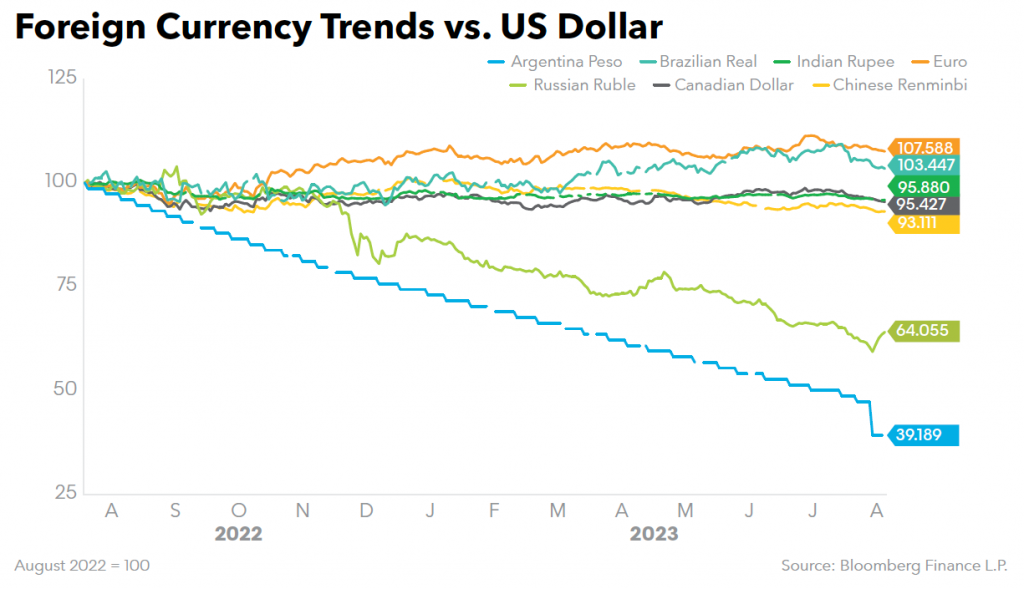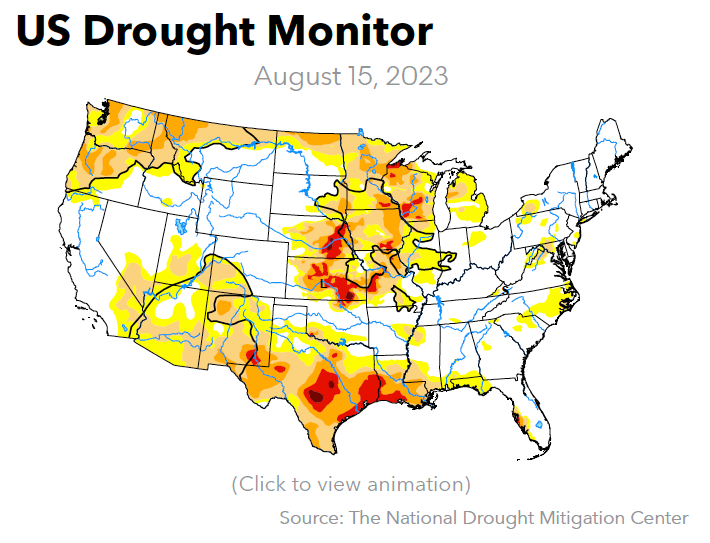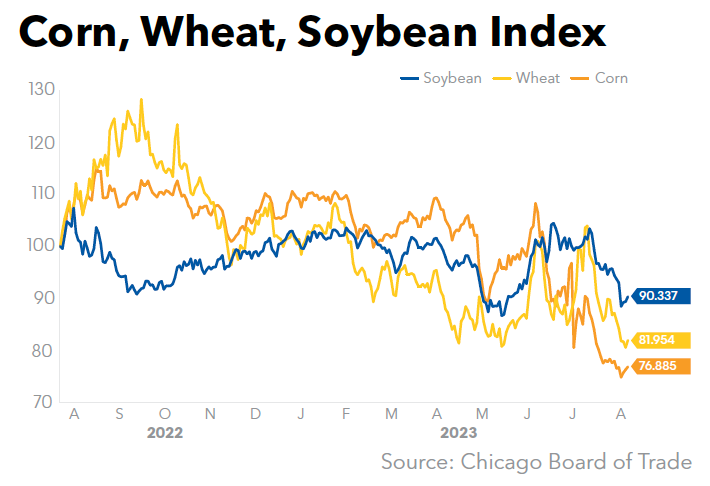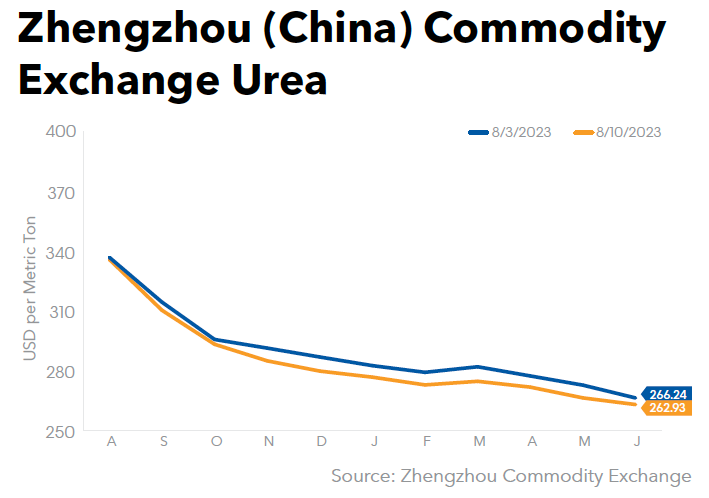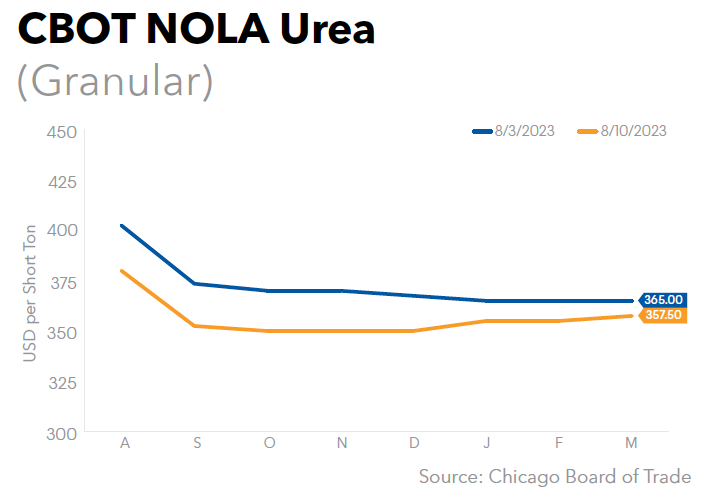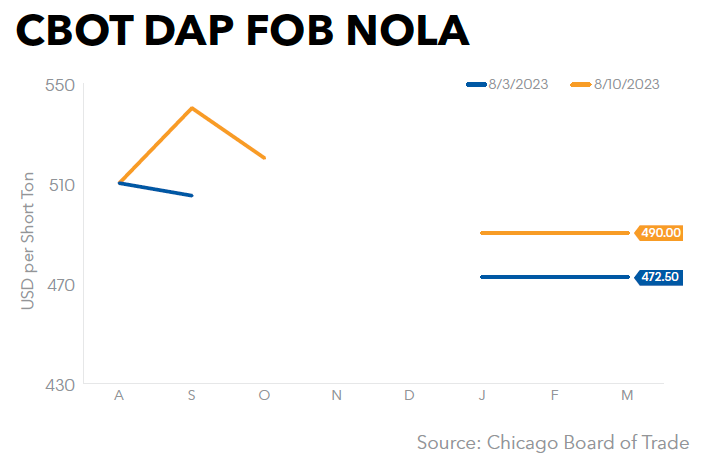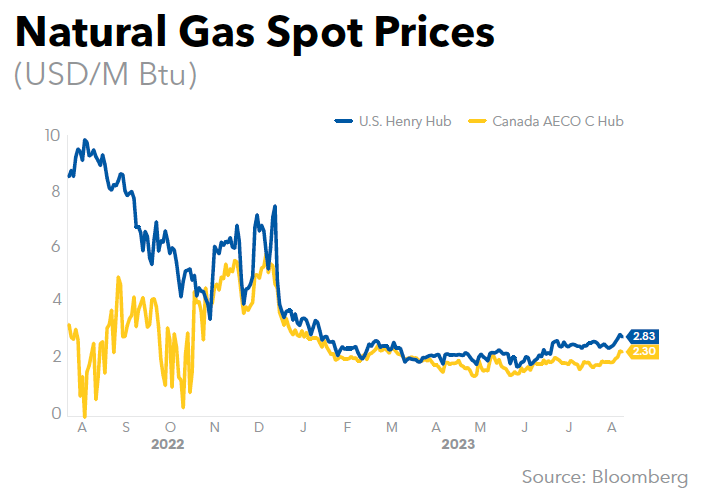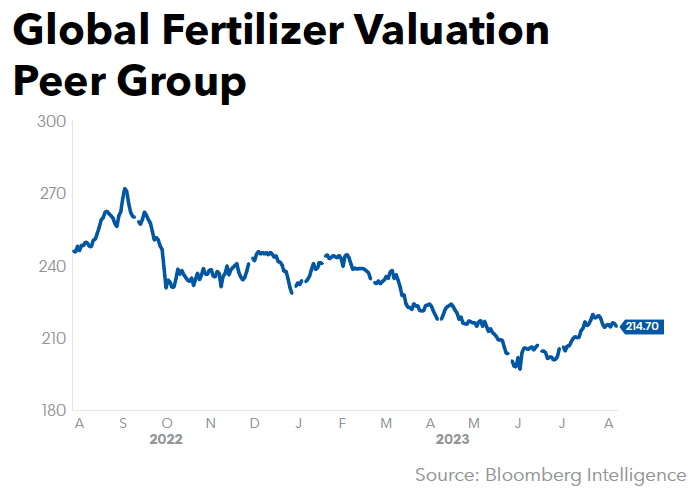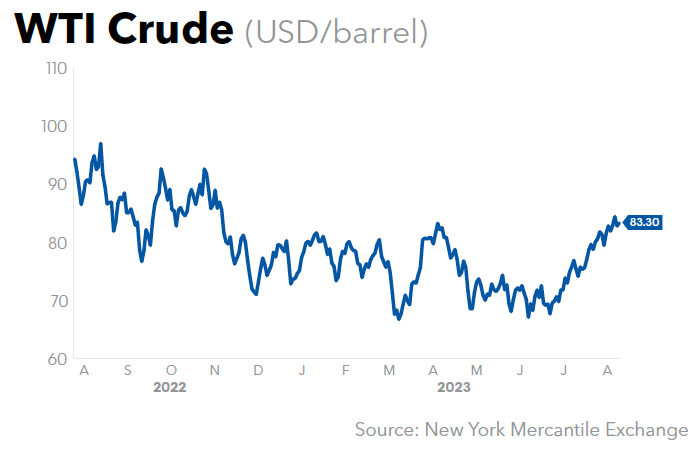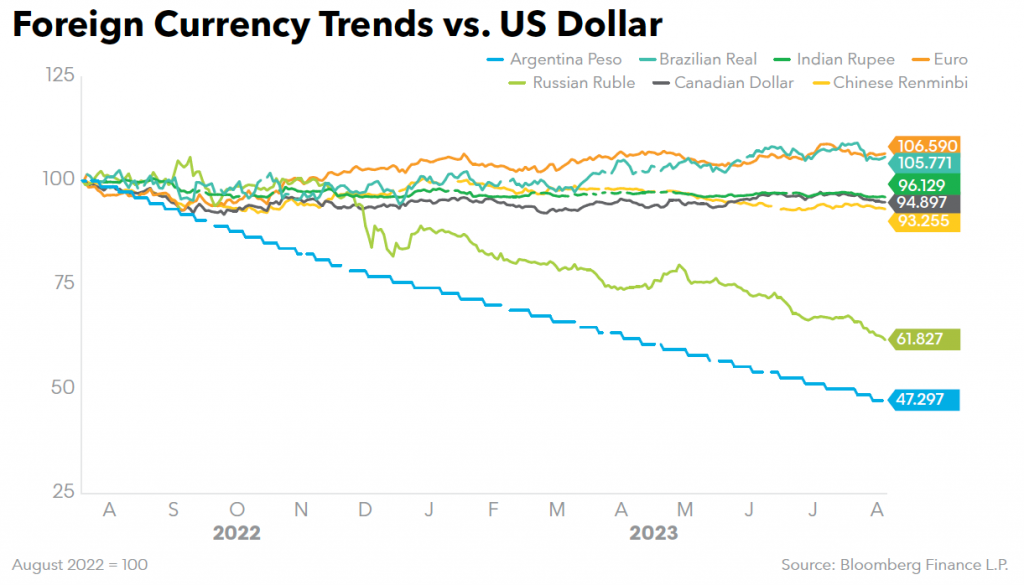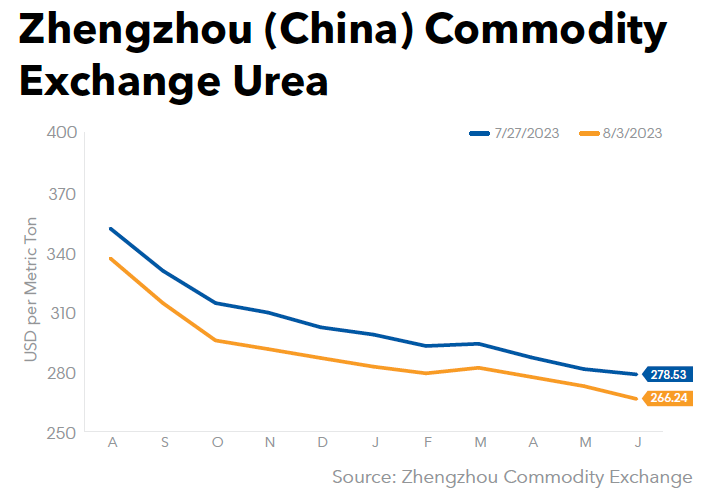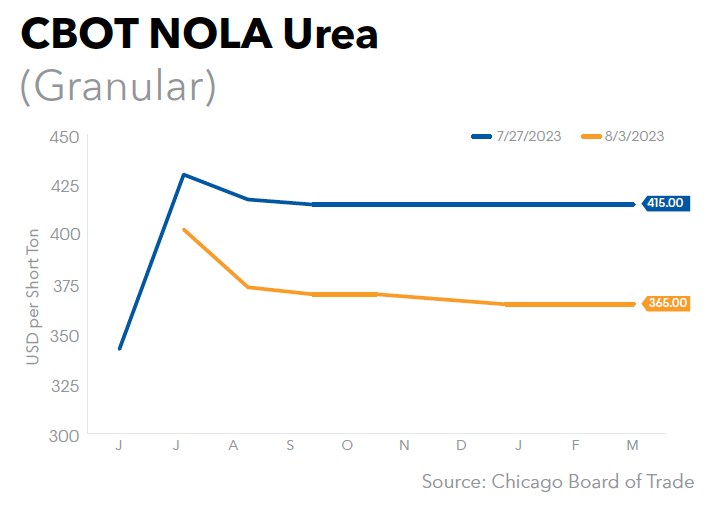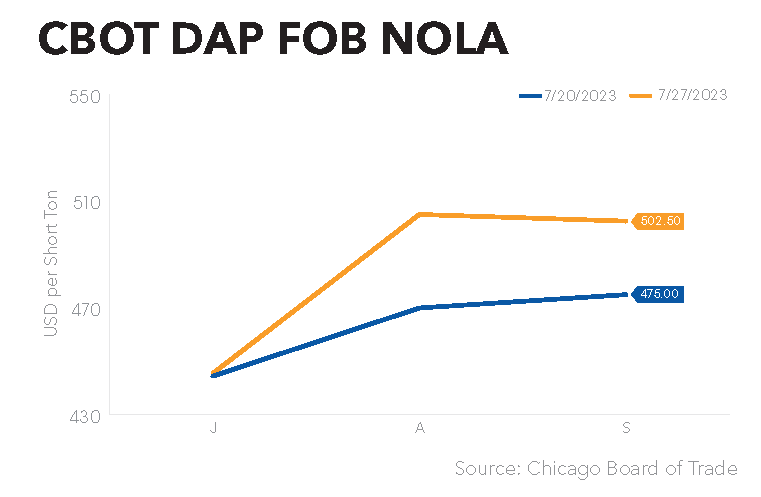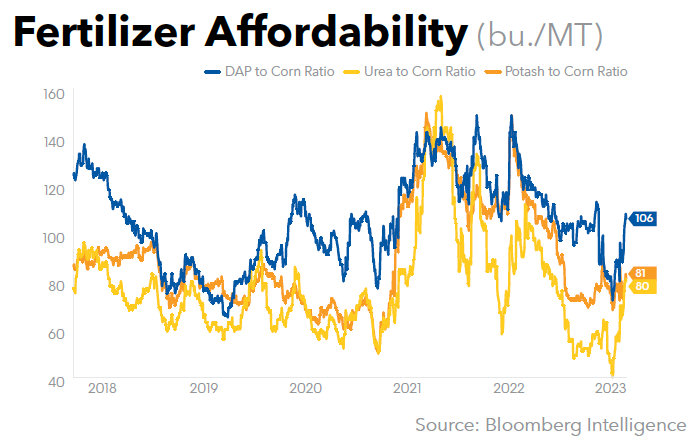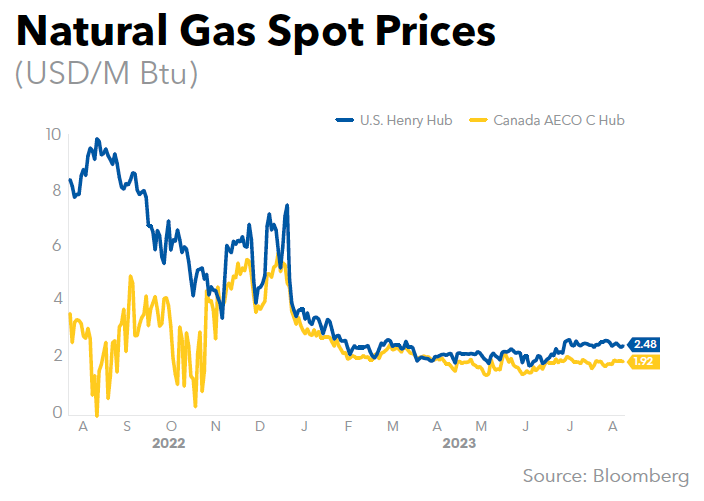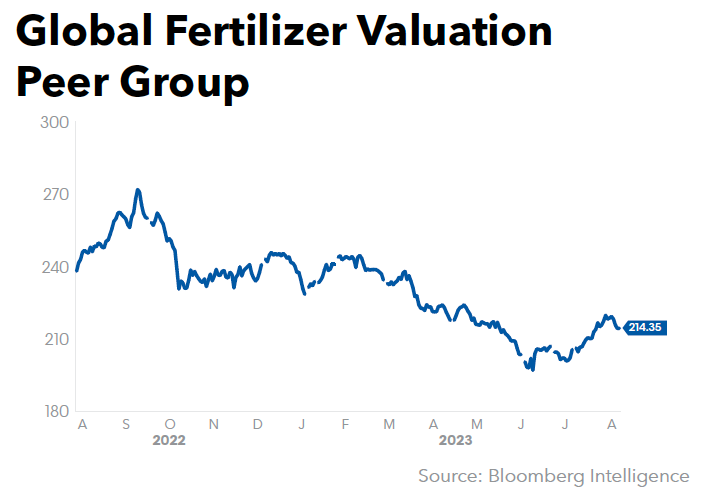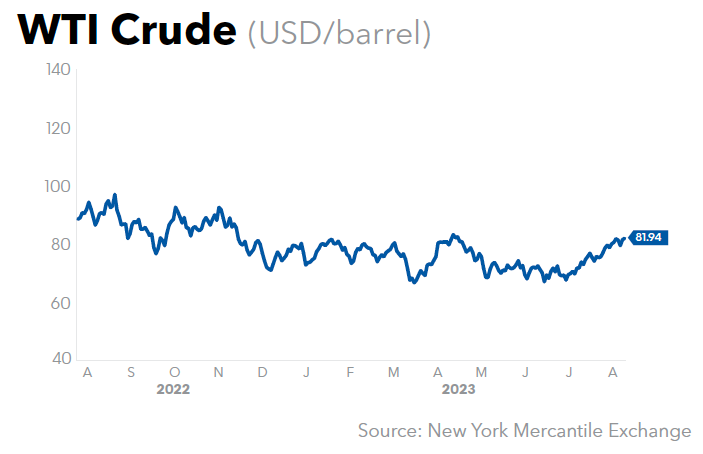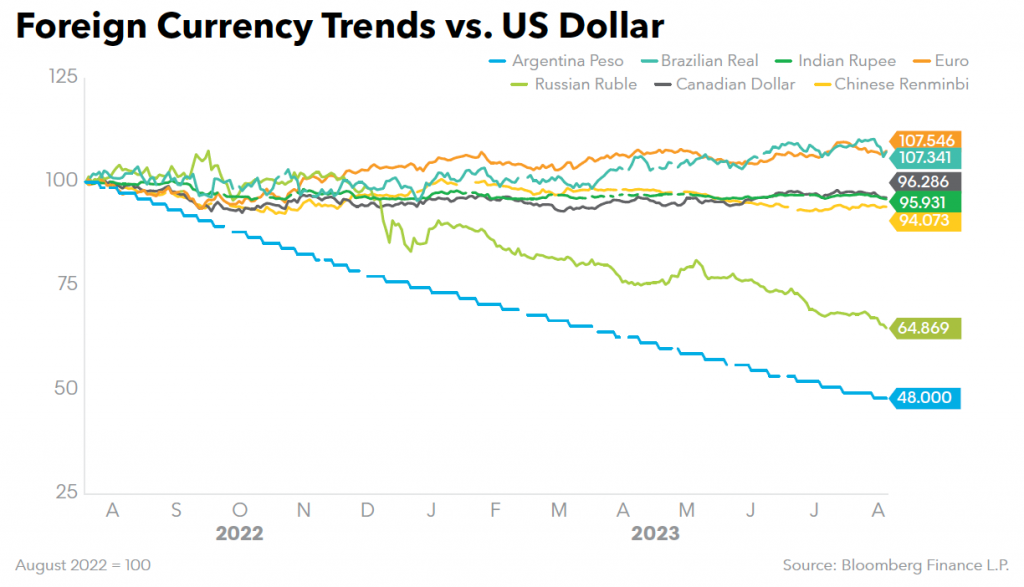| 8/18/2023 | Last Week | |
| Memphis | 18.50-19.00 | 18.50-19.00 |
| St. Louis | 20.00 | 20.00 |
| Peoria | 27.00-28.50 | 27.00-28.50 |
| Cincinnati | 30.00 | 30.00 |
| St. Paul | 33.00 | 33.00 |
| Catoosa/Inola | 36.00 | 36.00 |
All posts by jlarareo@bloomberg.net
Fertilizer Futures
Data Signals
Crops/Weather
Eastern Cornbelt:
Strong thunderstorms pushed through Ohio on Aug. 12, producing five confirmed tornadoes that caused spotty structural damage and power outages. Another round of severe weather was taking aim at parts of northern Illinois on Aug. 17, with forecasts warning of potentially heavy rain and strong winds.
Central Indiana enjoyed cool temperatures in the 70s at midweek, but a return to hot, humid weather was expected by the weekend for much of the Eastern Cornbelt.
Good or excellent ratings were assigned on Aug. 13 to 70-77% of the corn and soybeans in Ohio, 67-68% in Indiana, 64-70% in Illinois, and 50-54% in Michigan.
Western Cornbelt:
Iowa enjoyed cooler weather at midweek, but high heat and humidity were once again in the weekend forecast, with temperatures expected to reach the mid-90s and heat indices climbing to 100-110 degrees across the state.
Similar conditions were reported in Nebraska, with much of the state bracing for weekend temperatures in the upper-90s and triple digits. Parts of Missouri received nearly three inches of rain over the previous weekend, which helped alleviate drought conditions.
Good or excellent ratings were assigned to 38% of Missouri’s corn and soybeans on Aug. 13, up from the prior week’s 29-32% but well behind Iowa and Nebraska, where 58-61% of the corn and soybeans were rated as good or excellent at mid-month. Good or excellent ratings were also assigned to 72% of Nebraska’s sorghum crop, along with 63% of Missouri’s cotton and 76% of Missouri’s rice crop.
California:
Southern California was bracing for 2-4 inches of rain over the coming weekend as Hurricane Hilary moved north from Mexico’s Baja Peninsula, where forecasts warned of flash flooding and mudslides from an expected 4-6 inches of rain. Parts of southern Nevada were also anticipating heavy rainfall.
Fully 95% of California’s cotton was rated as good or excellent on Aug. 13, with 60% of the crop setting bolls by that date, behind the 77% five-year average. California’s rice crop was 65% headed by Aug. 13, with 80% of the acreage rated as good or excellent.
Pacific Northwest:
A heat wave gripped much of the Pacific Northwest in mid-August, pushing temperatures to a record 108 degrees in Portland on Aug. 14 and prompting heat alerts across all of Oregon and Washington. Other daily record highs in the triple-digits were also set on Aug. 14 in the Oregon cities of Salem, Eugene, Hillsboro, Troutdale, and McMinnville.
Daily record highs were posted in several Washington locations during the week as well, including Yakima and Kennewick. High heat and smoky conditions blanketed much of Idaho and Montana as well, but rain from Hurricane Hilary could move into parts of the Pacific Northwest next week.
The small grains harvest was well underway in the region at mid-month. The winter wheat crop was 94% harvested in Oregon by Aug. 13, compared with 70% in Washington and Montana, and 49% in Idaho. The harvest of spring wheat and barley was 39-51% complete in Montana, 30-35% in Washington, and 6% in Idaho by that date.
Western Canada:
Strong winds battered southern Saskatchewan and Manitoba at midweek, pushing a lot of smoke down from wildfires in the northern Prairies and Northwest Territories. Wind gusts in the 60-78 km/h range were reported in multiple Manitoba locations on Aug. 17, while gusts around 80 km/h hit parts of southeastern Saskatchewan.
Southern Alberta and southern British Columbia were under high heat warnings during the week, with several daily heat records set on Aug. 14, including a high of 36.6 C in Taber, Alta. Cooler weather was expected by the end of the week, however.
Saskatchewan crops were 9% harvested by mid-month, just slightly ahead of the five-year average and ahead of Manitoba’s 3% harvest progress. As of Aug. 8, crops in Alberta were rated at 43% good or excellent, down 5-10% from the five-year average. Drought conditions have taken a toll in southern Alberta, however, where just 28.2% of regional crops were rated as good or excellent on that date.
Dry Fertilizer Barge Rates
| 8/11/2023 | Last Week | |
| Memphis | 18.50-19.00 | 18.50-19.00 |
| St. Louis | 20.00 | 20.00 |
| Peoria | 27.00-28.50 | 27.00-28.50 |
| Cincinnati | 30.00 | 30.00 |
| St. Paul | 33.00 | 33.00 |
| Catoosa/Inola | 36.00 | 36.00 |
Fertilizer Futures
Data Signals
Dry Fertilizer Barge Rates
| 8/4/2023 | Last Week | |
| Memphis | 18.50-19.00 | 18.50-19.00 |
| St. Louis | 20.00 | 20.00 |
| Peoria | 27.00-28.50 | 27.00-28.50 |
| Cincinnati | 30.00 | 30.00 |
| St. Paul | 33.00 | 33.00 |
| Catoosa/Inola | 36.00 | 36.00 |
